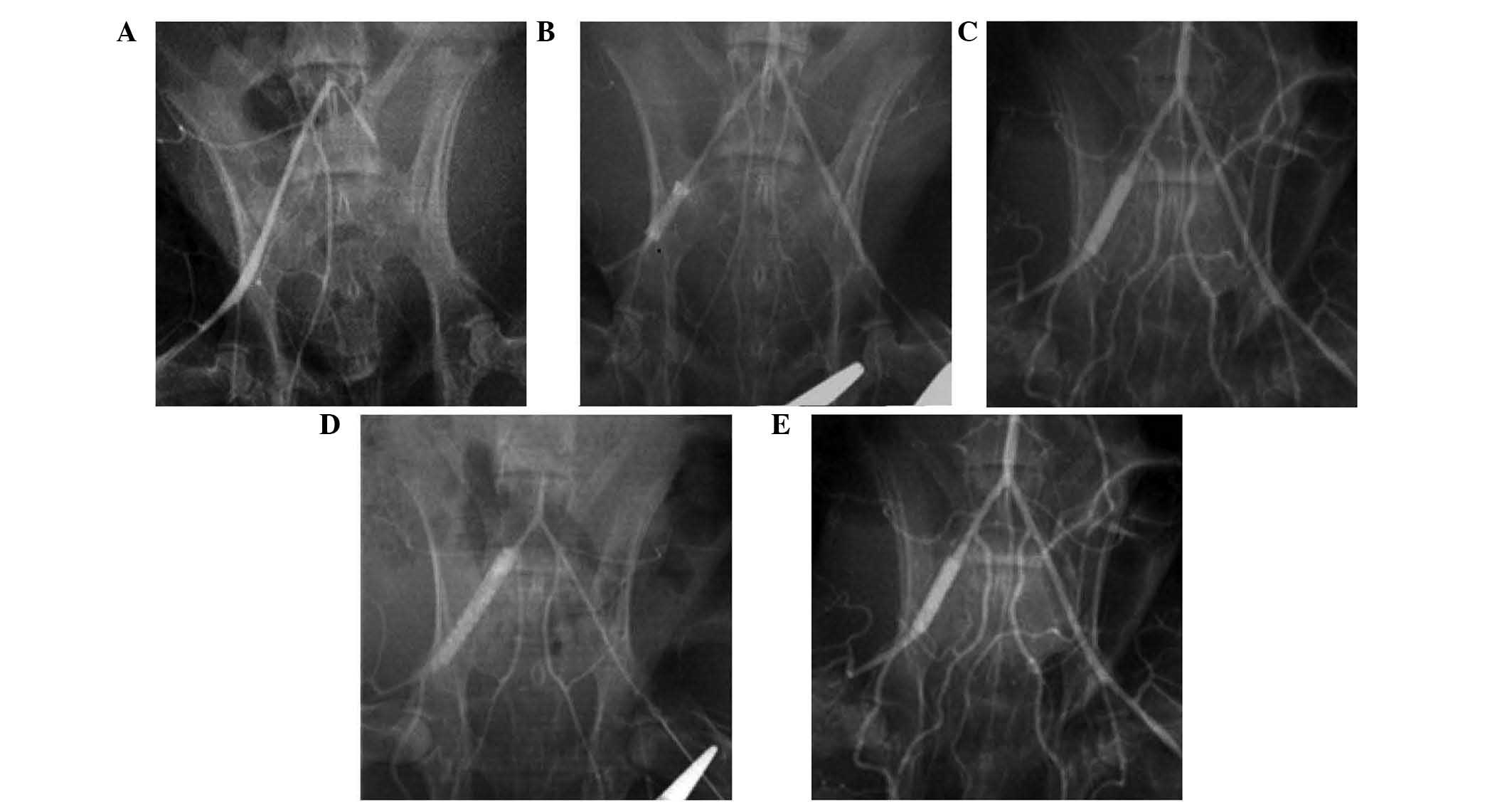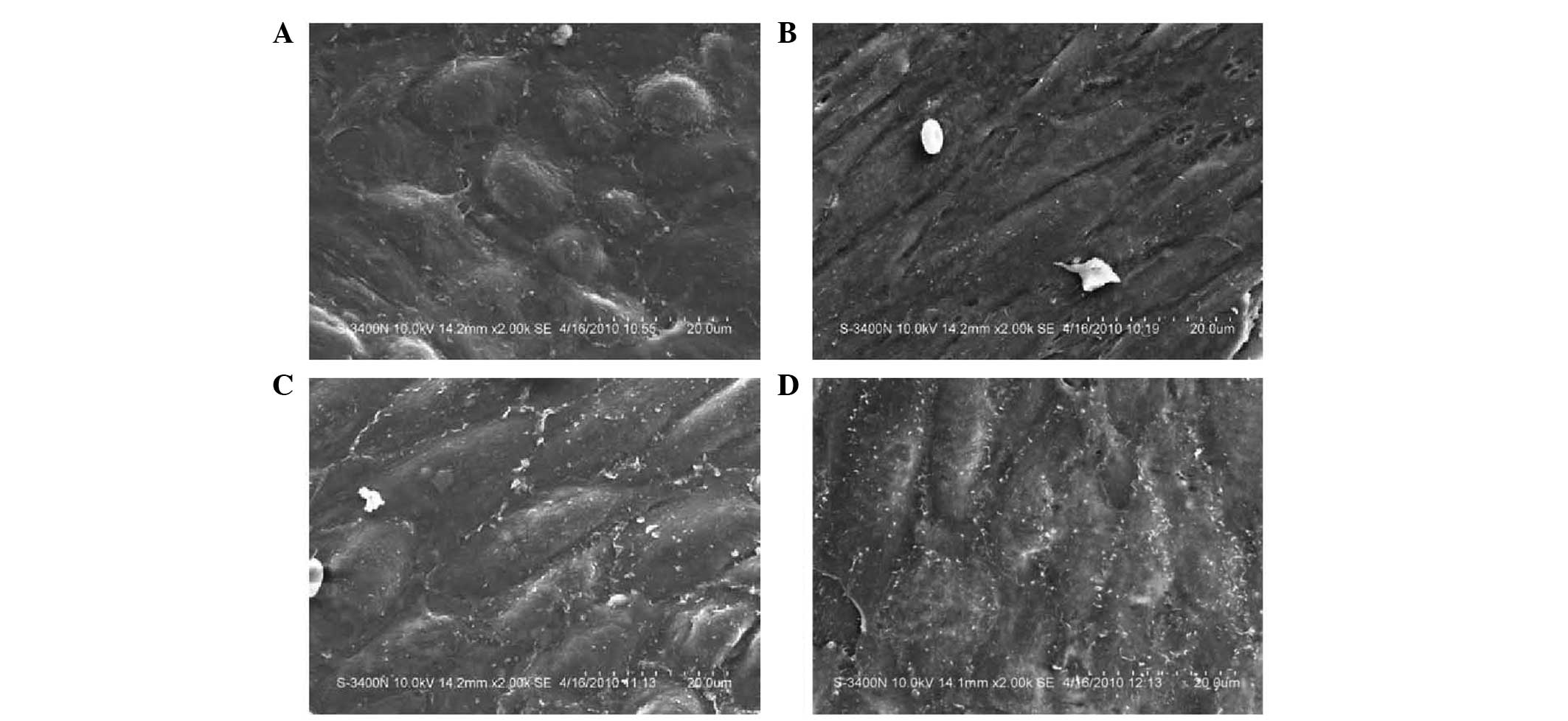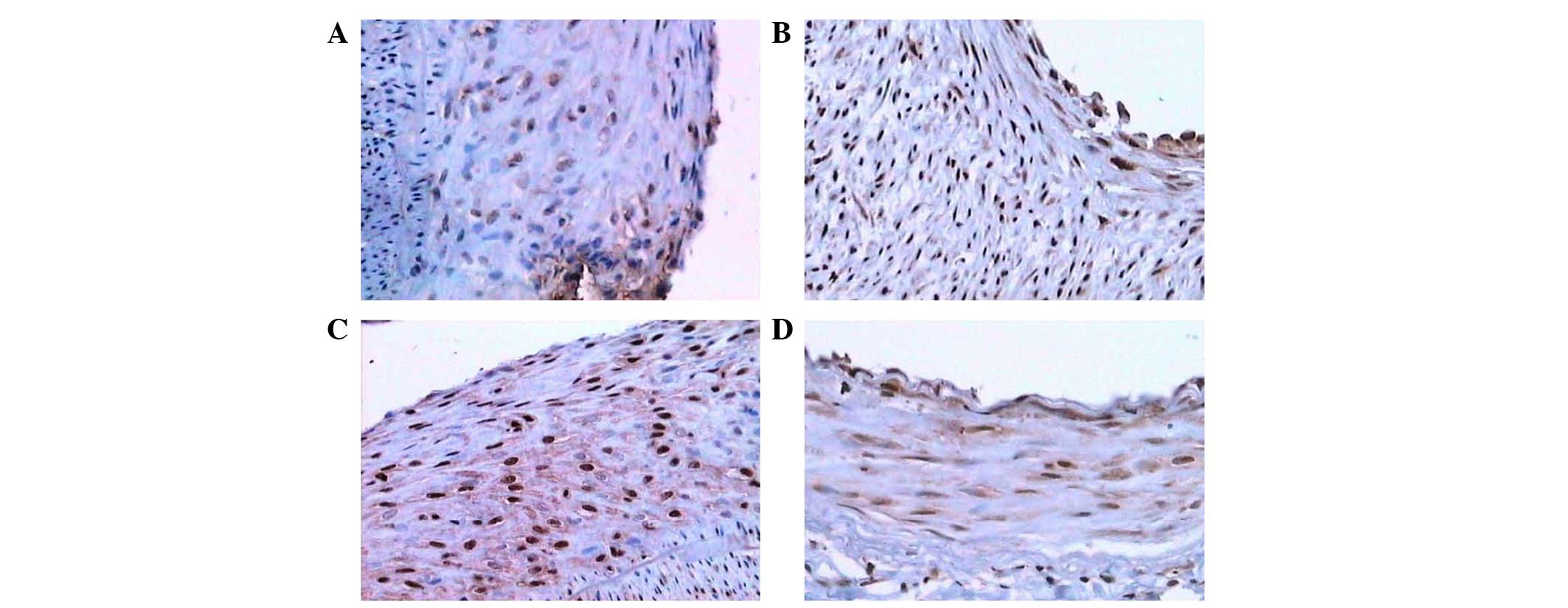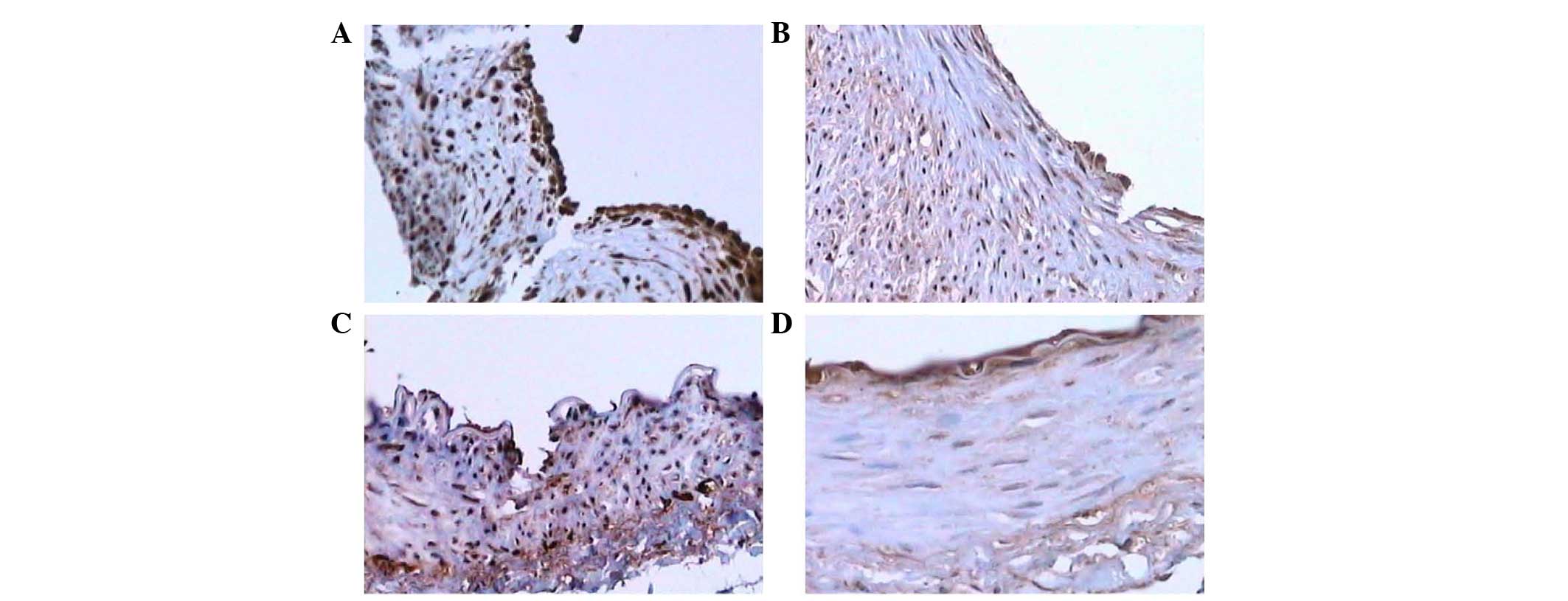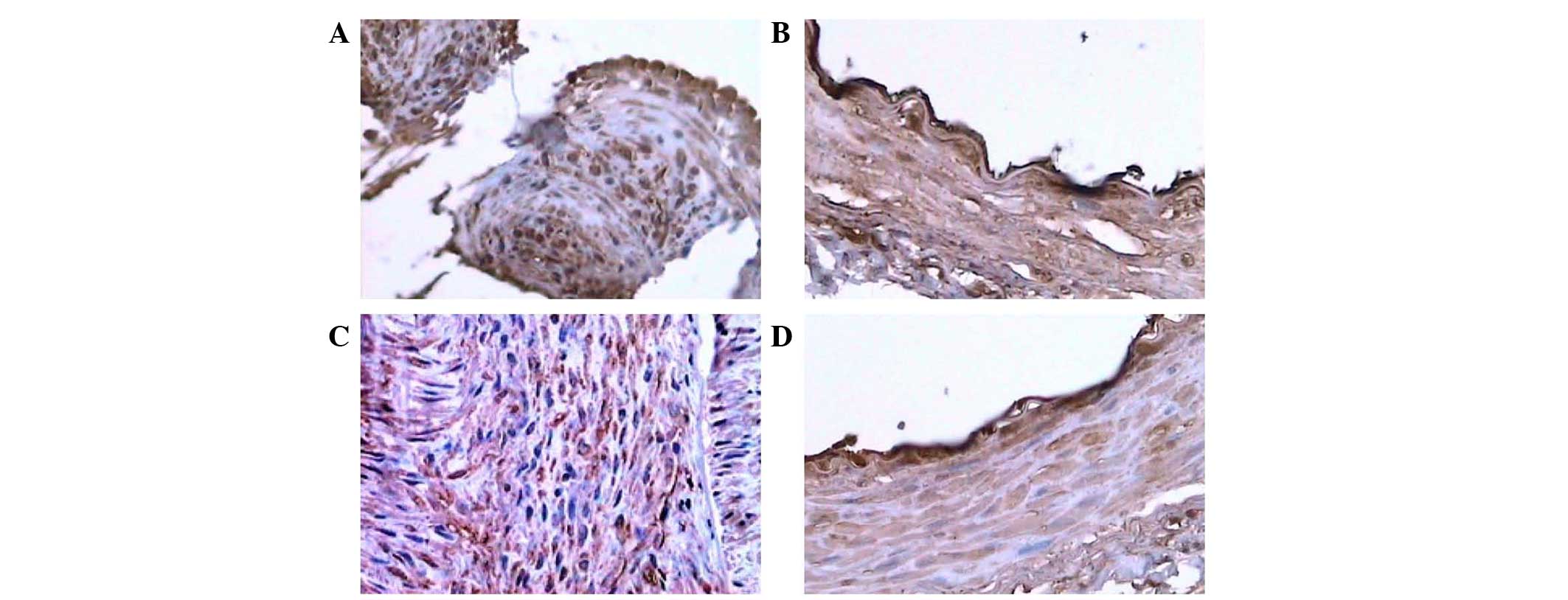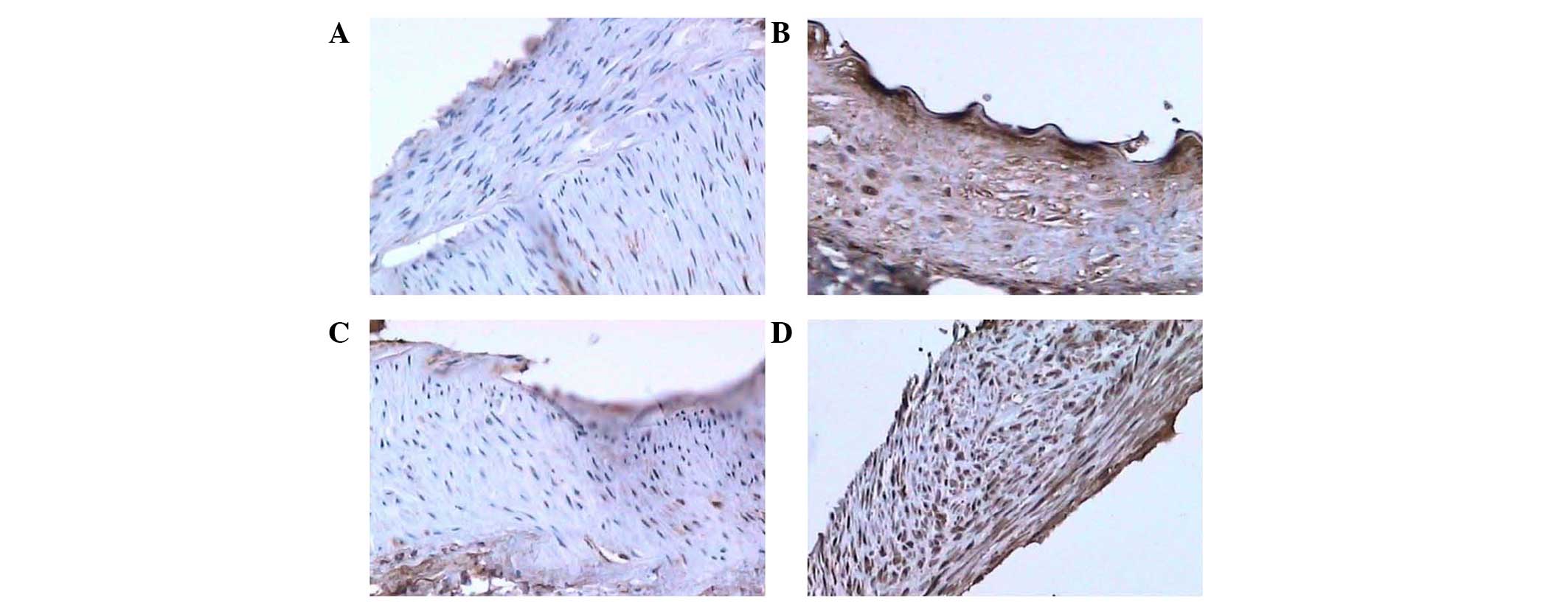|
1
|
Xu N, Zhang J, Li M, Pan J and Lu Z:
Incidence and classification of neointimal proliferation and
in-stent restenosis in post-stenting patients at 1-year interval:
Findings from non-invasive coronary computed tomography
angiography. Eur J Radiol. 83:1816–1821. 2014. View Article : Google Scholar : PubMed/NCBI
|
|
2
|
Schillinger M, Sabeti S, Loewe C, Dick P,
Amighi J, Miekusch W, Schlager O, Cejna M, Lammer J and Minar E:
Balloon angioplasty versus implantation of nitinol stents in the
superficial femoral artery. N Engl J Med. 354:1879–1888. 2006.
View Article : Google Scholar : PubMed/NCBI
|
|
3
|
Kipshidze N, Leon MB, Tsapenko M, Falotico
R, Kopia GA and Moses J: Update on sirolimus drug-eluting stents.
Curr Pharm Des. 10:337–348. 2004. View Article : Google Scholar : PubMed/NCBI
|
|
4
|
Schmieder GC, Richardson AI, Scott EC,
Stokes GK, Meier GH 3rd and Panneton JM: Selective stenting in
subintimal angioplasty: Analysis of primary stent outcomes. J Vasc
Surg. 8:1175–1180. 2008. View Article : Google Scholar
|
|
5
|
Han B, Wang J, Wang B and Wang Z: Clinical
analysis of endovascular treatment of patients with diabetic
arteriosclerosis obliteration of lower extremity. Chinese Journal
of General Surgery. 24:243–244. 2009.In Chinese.
|
|
6
|
Han B, Wang J, Wang B and Wang Z:
Treatment of arteriosclerosis obliterans of lower extremity
associated with thrombus formation. Clinical Medicine of China.
26:207–208. 2010.In Chinese.
|
|
7
|
Li YJ, Yan Guan and Wang ZL: Gene therapy
restenosis. Chinese Journal of Arteriosclerosis. 9:77–81. 2001.In
Chinese.
|
|
8
|
Maisel WH and Laskey WK: Cardiology
patient page. Drug-eluting stents. Circulation. 115:e426–e427.
2007. View Article : Google Scholar : PubMed/NCBI
|
|
9
|
Stettler C, Wandel S, Allemann S, Kastrati
A, Morice MC, Schömig A, Pfisterer ME, Stone GW, Leon MB, de Lezo
JS, et al: Outcomes associated with drug-eluting and bare-metal
stents: A collaborative network meta-analysis. Lancet. 370:937–948.
2007. View Article : Google Scholar : PubMed/NCBI
|
|
10
|
Gu WZ, Chen R, Brandwein S, McAlpine J and
Burres N: Isolation, purification and characterization of
immunosuppressive compounds from tripterygium: Triptolide and
tripdiolide. Int J Immunopharmacol. 17:351–356. 1995. View Article : Google Scholar : PubMed/NCBI
|
|
11
|
Tao X and Lipsky PE: The Chinese
anti-inflammatory and immunosuppressive herbal remedy Tripterygium
wilfordii Hook F. Rheum Dis Clin North Am. 26:29–50. 2000.
View Article : Google Scholar : PubMed/NCBI
|
|
12
|
Chen BJ: Triptolide, a novel
immunosuppressive and anti-inflammatory agent purified from a
Chinese herb, Tripterygium wilfordii Hook F. Leuk Lymphoma.
42:253–265. 2001. View Article : Google Scholar : PubMed/NCBI
|
|
13
|
Dai C, Wang P, Zhang X and Zhu L:
Triptolide PG490-88 combined with cyclosporin A induces immune
tolerance in a rat renal allograft rejection model. Chinese Journal
of Tissue Engineering Research. 15:861–864. 2011.In Chinese.
|
|
14
|
Lin J, Chen L, Lin Z and Zhao M:
Inhibitory effect of triptolide on multiforme in vitro. J Int Med
Res. 35:490–496. 2007. View Article : Google Scholar : PubMed/NCBI
|
|
15
|
Chang WT, Kang JJ, Lee KY, Wei K, Anderson
E, Gotmare S, Ross JA and Rosen GD: Triptolide and chemotherapy
cooperate in tumor cell apoptosis. A role for the p53 pathway. J
Biol Chem. 276:2221–2227. 2001. View Article : Google Scholar
|
|
16
|
Tao R, Lu L, Zhang R, Hu J, Ni J and Shen
W: Triptolide inhibits rat vascular smooth muscle cell
proliferation and cell cycle progression via attenuation of ERK1/2
and Rb phosphoylation. Exp Mol Pathol. 90:137–142. 2011. View Article : Google Scholar
|
|
17
|
Fang W, Peng F, Yi T, Zhang C, Wan C, Lam
CW and Yang X: Biological actity and safety of Tripterygium extract
prepared by sodium carbonate extraction. Molecules. 17:11113–11123.
2012. View Article : Google Scholar : PubMed/NCBI
|
|
18
|
Zheng GH, Liu JP, Wang NS, Chen HY and Chu
JF: Systematic review of Chinese herbal medicines for preventing
in-stent coronary restenosis after percutaneous coronary
intervention. Evid Based Complement Alternat Med. 2012:2534092012.
View Article : Google Scholar : PubMed/NCBI
|
|
19
|
Shang D, Wang J and Bogen Z: Combination
of Traditional Chinese and Western Medicing and Peripheral Vascular
Diseases. People's Medical Publishing House Co., Ltd; Beijing: pp.
78–271. 2004
|
|
20
|
Monahan TS, Andersen ND, Panossian H,
Kalish JA, Daniel S, Shrikhande GV, Ferran C and Logerfo FW: A
novel function for cadherin 11/osteoblast-cadherin in vascular
smooth muscle cells: Modulation of cell migration and
proliferation. J Vasc Surg. 45:581–589. 2007. View Article : Google Scholar : PubMed/NCBI
|
|
21
|
Liu Z and Li C: Effect of intravascular
stent surface modification on tunica intimal hyperplasia. Chinese
Journal of Tissue Engineering Research. 14:4721–4724. 2010.In
Chinese.
|
|
22
|
Lim KS, Jeong MH, Bac IH, Park JK, Park
DS, Kim JM, Kim JH, Cho DL, Sim DS, Park KH, et al: Effect of
atorvastatin-eluting stents in a rabbit iliac artery restenosis
model. Chonnam Med J. 49:118–124. 2013. View Article : Google Scholar
|
|
23
|
Tsutsumi J, Ishikawa T, Nakano Y,
Yoshimura M and Mutoh M: Long-term clinical and angiographic
outcomes after sirolimus- and paclitaxel-eluting stent placement
following rotablation for severely calcified lesions: A
retrospective nonrandomized study. Cardiovasc Interv Ther.
30:29–37. 2015. View Article : Google Scholar
|
|
24
|
Remkes WS, Somi S, Roolvink V, Rasoul S,
Ottervanger JP, Gosselink AT, Hoorntje JC, Dambrink JH, de Boer MJ,
Suryapranata H, et al: Direct drug-eluting stenting to reduce stent
restenosis: A randomized comparison of direct stent implantation to
conventional stenting with pre-dilation or provisional stenting in
elective PCI patients. JACC Cardiovasc Interven. 7:751–758. 2014.
View Article : Google Scholar
|
|
25
|
Wan L, Liu J, Huang CB, Wang Y, Lei L, Liu
L, Cheng YY and Feng YX: Effect of tripterygium glycosides on
pulmonary function in adjuvant arthritis rats. J Chin Med Assoc.
76:715–723. 2013.In Chinese. View Article : Google Scholar : PubMed/NCBI
|
|
26
|
Wan L and Liu J: Changes of CD4(+) CD25(+)
regulatory T cells, FoxP3 in adjuvant arthritis rats with damage of
pulmonary function and effects of tripterygium glycosides tablets.
Int J Rheumatol. 2012:3484502012.
|















